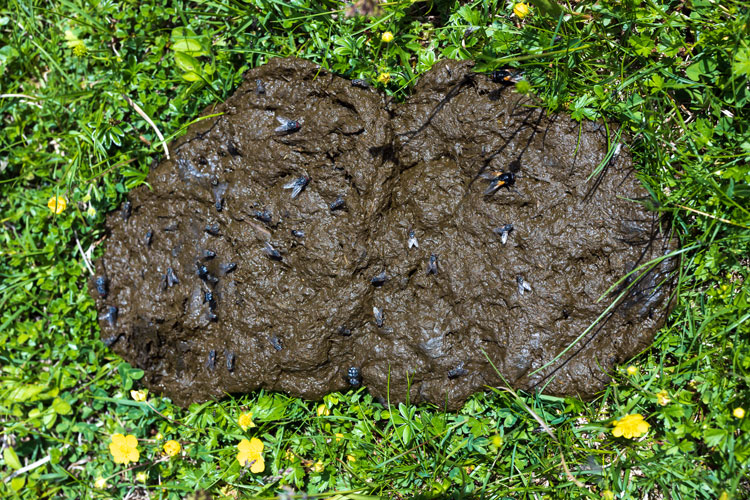
To win any battle, you need to know where the attacker is coming from, and preventing infectious disease is no different. An effective biosecurity plan must consider the ways that pathogens might be transferred to animals. This includes how they move and who or what could be carrying them.
Penn State Extension veterinarian Ernest Hovingh explained in a recent webinar that bacteria and viruses may travel via air, blood, or fecal/oral routes. Some of the major airborne pathogens include mycoplasma, infectious bovine rhinotracheitis (IBR), and bovine viral diarrhea (BVD), while bloodborne pathogens include anaplasmosis and bovine leukemia virus (BLV). Salmonella, E. coli, cryptosporosis, coccidia, and Johne’s are all examples of fecal/oral diseases, Hovingh explained.
The veterinarian advised putting in broad practices that reduce airborne transmission, such as good ventilation, instead of focusing on specific diseases. Bloodborne pathogens are typically not a large risk, except with biting flies. Fecal/oral diseases, on the other hand, are easily transferred with the help of vectors like manure.
Fomites and vectors
Vectors are living agents that carry and transport a pathogen from one place to another, whereas an inanimate object that transfers a disease-causing organism is referred to as a fomite. Hovingh explained that you should be aware of both off-farm and on-farm vectors and fomites.
Off-farm sources of pathogens may be visitors, vehicles, or animals. Visitors are any nonemployees, and you must weigh the risks of individual cases, Hovingh said. A friend who has not been in contact with any other farm animals presents less risk than a veterinarian who may have been to multiple farms beforehand without washing up. You can mitigate this risk by having low-risk visitors use disposable boots while perhaps asking higher risk persons to use an effective footbath and wear clean clothes.
For vehicles that may enter the farm, Hovingh recommended caution around trailers that are picking up bull calves or cull cows. “Most of those cows leaving the farm are not going to be totally healthy,” he reminded. Avoid having those vehicles enter vulnerable areas, such as the maternity pens, when possible.
Animals that arrive to the farm also present a biosecurity risk. This covers new animals as well as those that left and returned, such as for a show. Quarantine these animals effectively and do not put them near maternity or calf areas upon arrival.
Within the farm, disease risk exists from personnel, equipment, animals, and air and feed particles, Hovingh described. Fecal/oral pathogens are again the main concern, and this can mostly occur when equipment, clothing, facilities, or air are shared between cows and calves.
Avoid having calves in the same barn, breathing the same air, as older animals, especially cows in the maternity area. When possible, don’t share equipment such as skid loaders between these age groups, either, and if it’s necessary, try to disinfect the bucket and wheels between groups.
Manure from sick animals — even those who may not be exhibiting symptoms, such as Johne’s animals — can easily be transferred on the clothes or boots of employees. Hovingh advised that if the same person must work with cows and calves, do the calf chores first. If that’s not possible, wash your boots and consider changing into clean clothes.
Being aware of how pathogens may reach your animals is crucial to helping you make a game plan to prevent disease from occurring. That’s a battle that every farmer wants to win.








